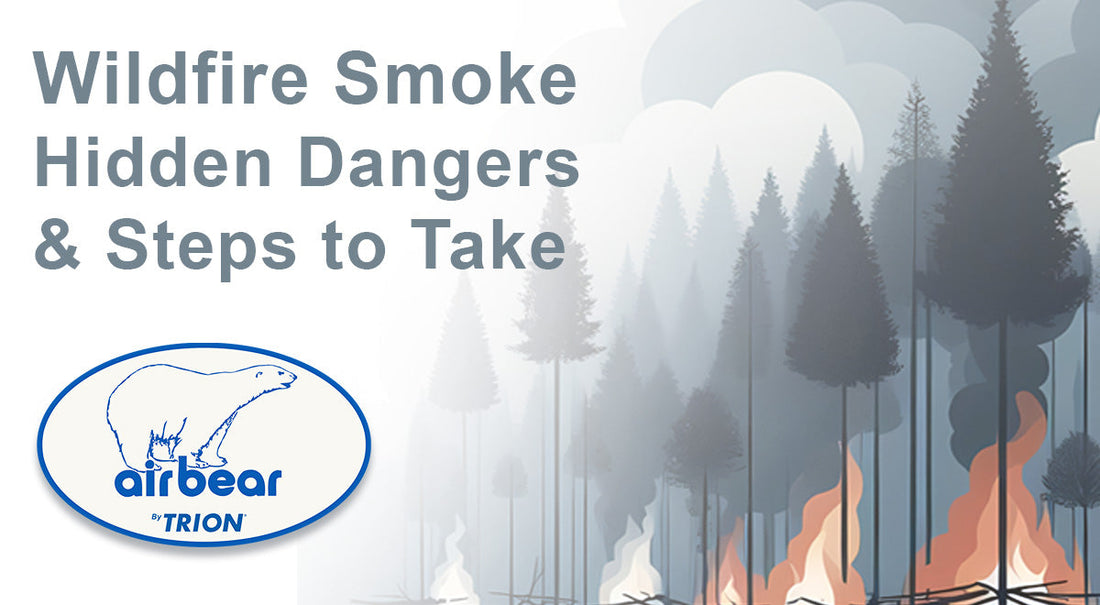
Steps to Mitigate Wildfire Smoke Hidden Dangers at Home
Share
In recent years, wildfires have become more frequent in the United States.. These fires, pose immediate threats to life and property. However, the danger doesn’t end with the there.
Wildfire smoke—a toxic mix of gases and fine particles—has far-reaching health impacts that can affect populations hundreds or even thousands of miles away from the fire itself. Even after the fire is out, ash, soot and ash can settle everywhere including your home.
The Composition of Wildfire Smoke
Wildfire smoke is a complex mixture of pollutants, including carbon monoxide, volatile organic compounds (VOCs), and fine particulate matter (PM2.5). Among these, PM2.5—particles smaller than 2.5 micrometers in diameter—is particularly dangerous because it can penetrate the lungs and enter the bloodstream. Exposure to these pollutants has been linked to a range of health issues, including: asthma, bronchitis, COPD and cardiovascular issues
Who Is Most at Risk?
While wildfire smoke poses a risk to everyone, certain groups are more vulnerable. These include:
-Children, whose lungs are still developing
-Older adults, who may have pre-existing health conditions
-Pregnant women, as smoke exposure can harm fetal development
-People with respiratory or cardiovascular diseases
Even healthy individuals can experience symptoms such as coughing, throat irritation, and shortness of breath when exposed to wildfire smoke.
How Air Bear Filters Can Help
One of the most effective ways to protect yourself from wildfire smoke is to improve indoor air quality, as staying indoors can significantly reduce your exposure to harmful pollutants. This is where Air Bear filters come in.
Upgrade to a higher rated MERV filter: If your home has a central heating and cooling system, upgrading to a filter with a Minimum Efficiency Reporting Value (MERV) rating of 8 or higher can significantly improve indoor air quality. For smoke, we recommend at least a MERV 11 and preferably a MERV 13 for the best filtration of airborne particulates.
Seal Your Home: Use weather stripping and caulk to minimize outdoor air infiltration.
Portable Air Purifiers: Compact and easy to move, these devices are particularly useful for creating a clean air zone in a specific room, such as a bedroom. The more clean air changes you can create with a filter the better.
Monitor Air Quality: Use tools like the Air Quality Index (AQI) and AirNow.gov to stay informed and plan your activities accordingly. Purchase an indoor air quality monitor to see what your current level at your home are.
Clean: Use non toxic cleaners to remove any particles that may have settled in your home.
Final Take
Wildfire smoke is a serious health hazard, but with the right precautions, you can significantly reduce your exposure. Investing in quality air filters, sealing your home, and staying informed about air quality are key steps in protecting yourself and your loved ones.
As wildfires continue to be a recurring challenge, taking proactive measures to safeguard indoor air quality is more important than ever. Our thoughts and prayers go out to all of those currently in Los Angeles who have been affected by these devastating wildfires.
